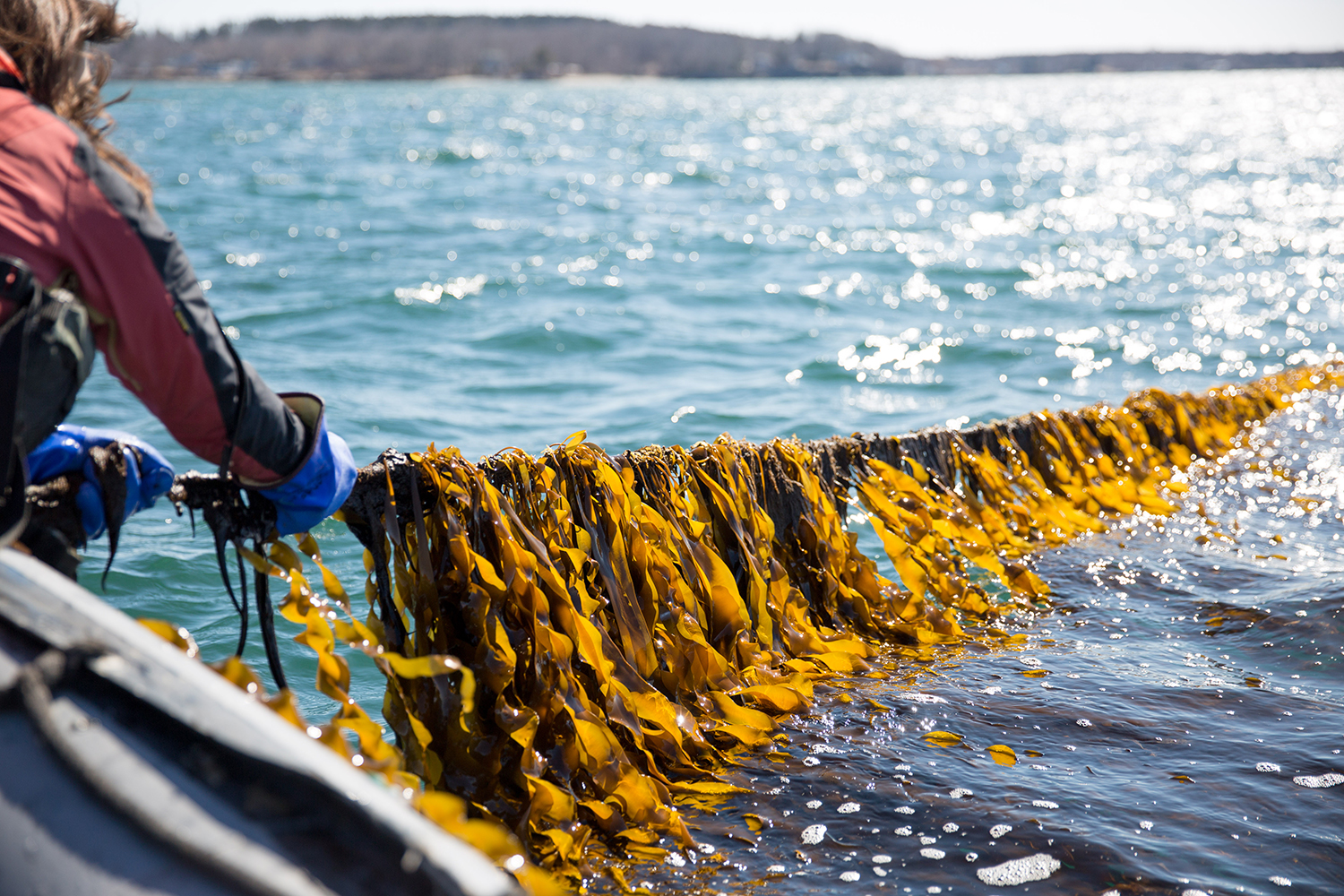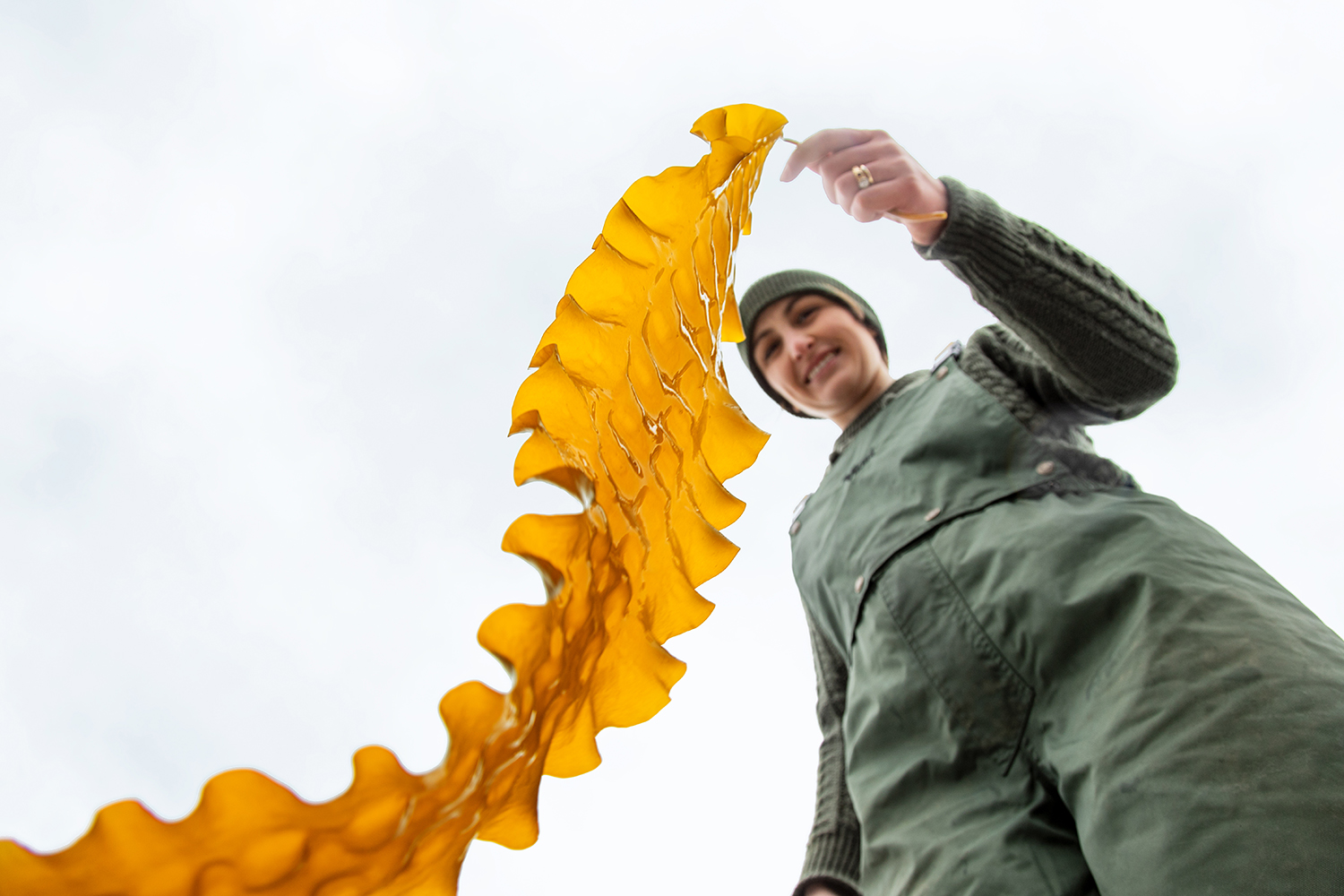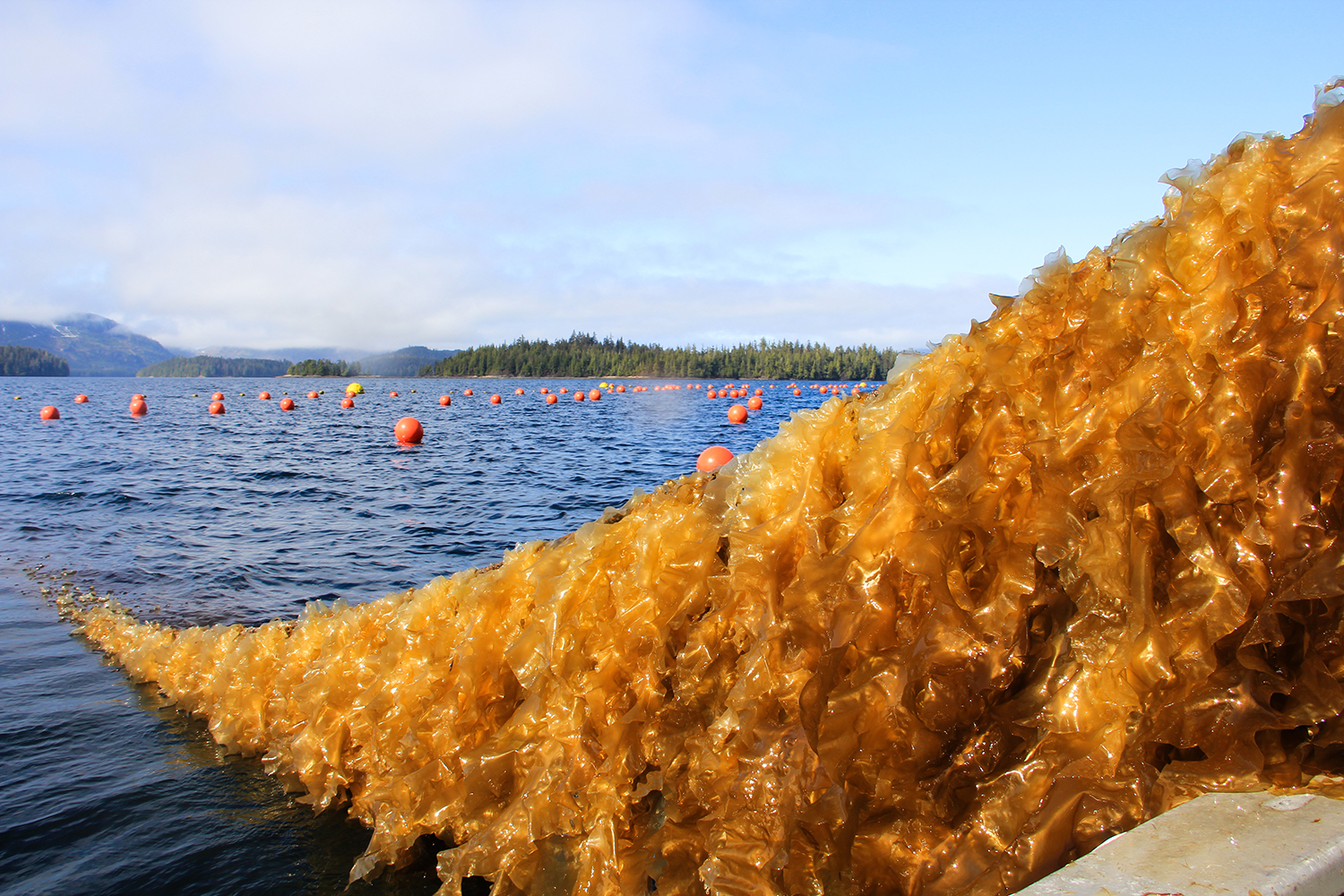Seaweed farmers, many of them fishermen, are producing record harvests and building brands for U.S. products

In 2018, seaweed farmers working with Atlantic Sea Farms harvested 30,000 pounds of kelp and the fledgling seaweed aquaculture industry was largely viewed as a “side hustle” that allowed Maine lobstermen to generate additional income in the off-season.
“There was a market opportunity that intersected with an economic development opportunity to help diversify fisheries in the face of climate change,” explained Briana Warner, CEO of Atlantic Sea Farms. “Two of the biggest importers of seaweed are Costco and Trader Joe’s so it’s not like this is a niche segment [but] what hasn’t been done before is having a clean, fresh product grown here in the United States.”
Although global seaweed aquaculture production has increased from 10.5 million tons in 2000 to 32.3 million tons in 2018, according to the latest data from the Food and Agriculture Organization of the United Nations, almost 90 percent of those farms are located in Asia. Atlantic Sea Farms, which bills itself as the first commercially viable seaweed farm in the United States, is working to change that.
Based in Saco, Maine, Atlantic Sea Farms works with 17 seaweed farmers (and counting) who expect to harvest a record-breaking 850,000 pounds of kelp in 2021. Once-fledgling kelp farms have expanded into a thriving segment of the aquaculture industry and are racing to keep up with demand.
“We’re just now reaching a sweet spot and are excited to continue to see the growth,” Warner added. “Yes, we’re able to meet the demand at this very moment but there’s a whole lot more demand that we’re building.”

Doubling down on domestic production
Domestic seaweed farming is on the rise but it’s still far from mainstream in the United States and that creates challenges for growers.
“We need to be able to produce enough volume to achieve cost-effective production,” said Markos Scheer, CEO of Premium Aquatics, an Alaska seaweed farm that sells kelp under the Seagrove Kelp label. “There are a lot of boutique seaweed farms that haven’t achieved scale and so our cost of production is higher; it means that on a price basis, we can’t compete with [seaweed farms overseas].”
https://www.aquaculturealliance.org/advocate/mexican-startup-offers-diy-aquafeed-solution-by-upcycling-wastewater/
Morning Star Fisheries and Aquaculture is one of those boutique farms.
In 2017, Jodi Brewer and her lobsterman husband Alex Hutchins signed their first five-acre land lease in Southport, Maine, selling their kelp to Atlantic Sea Farms.
Brewer believes the industry shows a lot of promise, especially as the stock of wild lobsters hits record lows, forcing fishers to seek out alternative crops. It’s one of the reasons Morning Star Fisheries and Aquaculture is going all in on kelp; Brewer is in the process of filling out the paperwork for a 20-year land lease.
“People are starting to discover the world of kelp,” she said. “It’s only going to keep growing and getting bigger and providing us with more opportunities.”
Scheer believes the significant – and growing – global market has created opportunities to produce more seaweed at home as long as it can be marketed as a premium food product, not just an additive in toothpaste, cosmetics and other products.
“As companies, we need to understand what the larger market is open to: Is it just snacks, or would consumers use it as a vegetable? We want to be on par with spinach, kale and other leafy greens,” he said. “I think it’ll be 10 years before the industry has enough revenue, products and market development to reach critical mass where we’ll be like other established [food] industries.”

Building a brand through education
A big part of moving from the startup phase to robust domestic production is helping seaweed go mainstream. For Warner, that means producing products that taste great and getting them to consumers in creative ways.
“It’s not just, ‘How many people can I get to eat kelp and how much can I get them to eat?’ I have to make it taste good,” she said. “People can go for the social mission all they want, but they won’t buy it twice if they don’t like it.”
Warner has taken a proactive approach to building excitement around seaweed, launching partnerships with big brands like Whole Foods, Sweet Green, Be Good, Daily Harvest and Sprouts to feature seaweed in its soba noodle bar and as an addition to smoothies; the brands featured Atlantic Sea Farms on billboards in Times Square.
In fact, Warner cites marketing, not processing, as the main roadblock to scaling the industry.
“There’s a false narrative [that] there’s not enough processing; there is [enough processing capacity],” she assured. “The seaweed industry in the United States is … growing very, very quickly; there is a lot of optimism [but] I would also love for people to realize that seaweed is having its moment and we don’t want it to be a moment that’s just right now, we want it to be 30, 40 years from now, so we need to make sure that we’re doing – what needs to be done to make sure that the American consumer is excited about American-grown seaweed.”
Editor’s note: This article was amended to correct the total of global seaweed production, which grew from 10.5 million tons in 2010 to 32.3 million tons in 2018, not 10,500 and 32,385 tons, respectively. We regret the error.
Follow the Advocate on Twitter @GAA_Advocate
Now that you've finished reading the article ...
… we hope you’ll consider supporting our mission to document the evolution of the global aquaculture industry and share our vast network of contributors’ expansive knowledge every week.
By becoming a Global Seafood Alliance member, you’re ensuring that all of the pre-competitive work we do through member benefits, resources and events can continue. Individual membership costs just $50 a year. GSA individual and corporate members receive complimentary access to a series of GOAL virtual events beginning in April. Join now.
Not a GSA member? Join us.
Author
-

Jodi Helmer
Jodi Helmer is a North Carolina-based journalist covering the business of food and farming.

